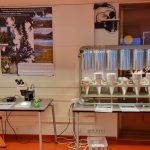
Can the local inhabitants get excited about science in one day?… Read more →

Can the local inhabitants get excited about science in one day?… Read more →
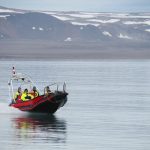
Can the famous Storegga Tsunami, that occured around 8.1 cal ka BP, be identified for the first time in Svalbard in the raised marine sediments and geomorphology of Isfjorden?
If so, how extensive was the tsunami here, what role did sea ice play and what marine and climate conditions persisted at the time?
What implications does this have for the future submarine landslide tsunami risk in Svalbard?… Read more →
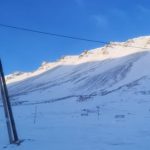
How is warming affecting the vegetation on Svalbard? Svalbard in the High Arctic is one of the fastest warming places on earth, with air temperatures increasing by 3 to 5° C over the last 40 to 50 years, with even more dramatic warming in winter, affecting snow depth and timing of snow melt. Climate change also has implications for reindeer, and the increase in herbivores is expected to lead to a shift in plant communities. … Read more →
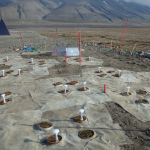
The tundra ecosystem in Svalbard is characterized by some of the fastest environmental shifts resulting from climate change. In recent years, increases in biomass of vegetation available for Svalbard reindeer has been correlated with increased temperatures in summer, which may mean more food for Svalbard reindeer. Although increases in early-season production of vegetation with increasing temperatures is well documented, the effects of late-season warming on senescence of key forage for Svalbard reindeer (i.e., the duration of availability of nutritious food) is still unknown. We aim to evaluate how key forage for Svalbard reindeer respond to gradients of heating in the late summer and throughout the growing season.… Read more →
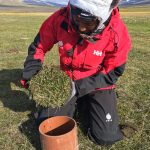
As soil moisture regimes shift with climate change, so may the vegetation communities wildlife of Svalbard rely on. Yet, little is known about how plants of specific habitats respond to changes in soil moisture—especially shifts in moisture later in the growing season—and it is possible some species may be able to adapt to shifts in moisture while others may not. We aim to evaluate how plant species in key habitats used by Svalbard reindeer respond to changes in moisture regimes in the late summer and early autumn.… Read more →
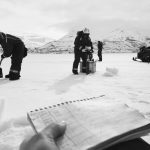
Sea ice was a once prevalent feature of the Arctic, but we are in a time of change. Svalbard is one of the most rapidly changing Arctic regions, with fjordic systems changing from an Arctic to an Atlantic state. Alongside this change, is the either lack or unpredictable formation of sea ice. Not only an important habitat for charismatic marine mammals, such as polar bears, sea ice is a whole ecosystem itself. Living within the tiny (<1mm) channels inside of sea ice, a diverse community consisting of viruses, bacteria, ice algae and metazoans can be found. … Read more →
Climate change in Arctic coastal systems leads to declining sea-ice and sea-terminating glaciers, and these changes are expected to modify biodiversity and ecosystem functioning in the littoral fjord areas in Svalbard. In addition, influx of Atlantic water and invasive species, which may compete with and displace Arctic species, may change community composition and spatial distribution.… Read more →
Vegetation, especially mosses, play an important role in insulating the soil from increasing air temperatures, potentially reducing permafrost thaw, thus leading to a reduced active layer depth (ALT). As of now, we have little knowledge on how the different plant communities on Svalbard affect ALT beneath them, and whether the insulating effects of plant communities… Read more →
Bryophytes dominate in wide regions of the Arctic, also presenting the dominant vegetation cover on Svalbard. The layer of bryophytes in moss tundra, with its insulating abilities, is a significant factor in preserving permafrost. Herbivore activity such as goose grubbing may damage and remove parts of the moss layer, and is expected to be a… Read more →
In high-arctic tundra, vegetation is facing severe challenges due to climate-change-induced warming, shifts in seasonality and potentially increased herbivore pressure. We expect shifts in vegetation from moss-dominated to vascular plant-dominated communities, as well as species shifts within these groups. While mosses are a major component of high Arctic vegetation that is subject to climate-induced change,… Read more →